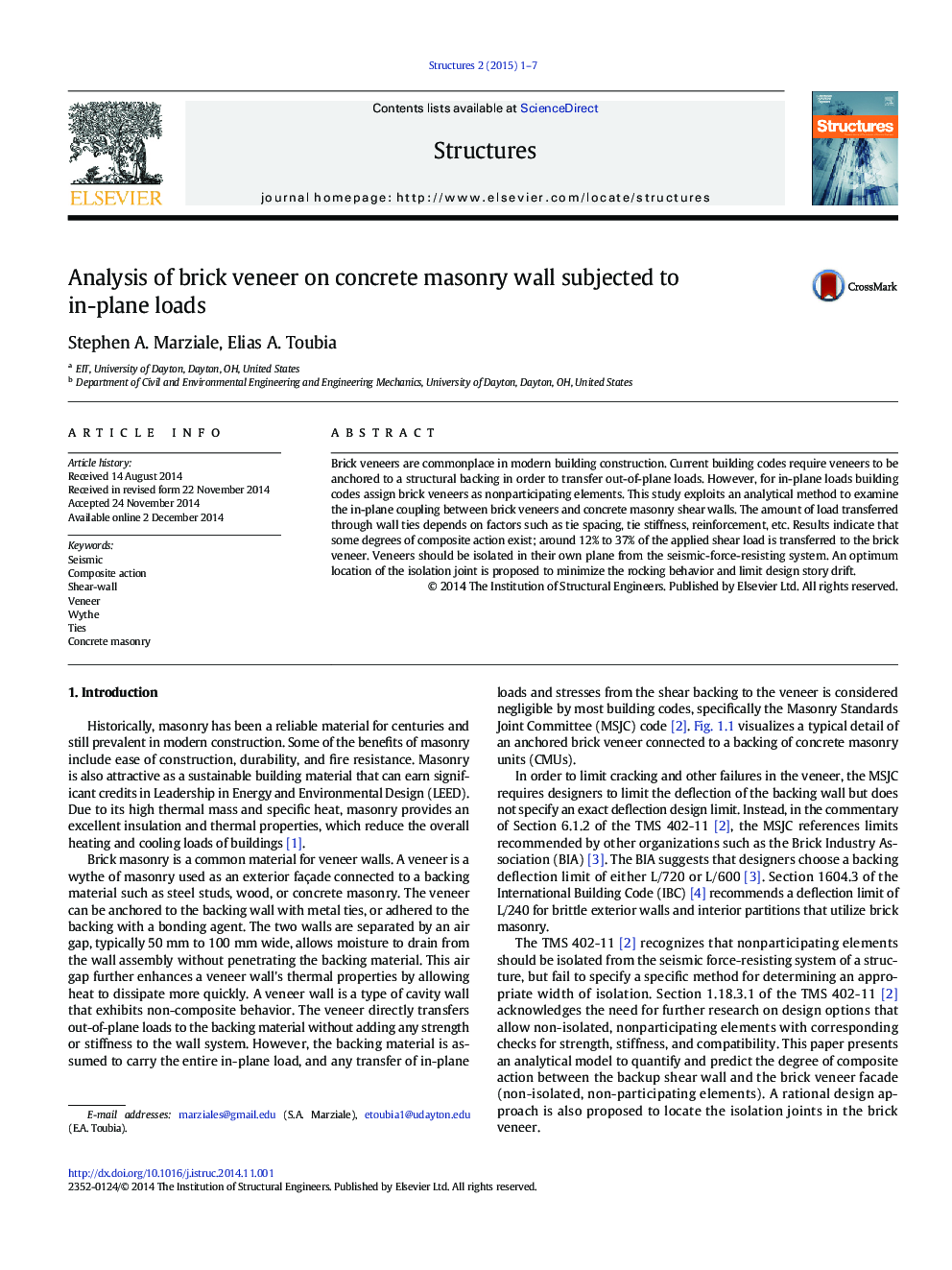| Article ID | Journal | Published Year | Pages | File Type |
|---|---|---|---|---|
| 308005 | Structures | 2015 | 7 Pages |
Brick veneers are commonplace in modern building construction. Current building codes require veneers to be anchored to a structural backing in order to transfer out-of-plane loads. However, for in-plane loads building codes assign brick veneers as nonparticipating elements. This study exploits an analytical method to examine the in-plane coupling between brick veneers and concrete masonry shear walls. The amount of load transferred through wall ties depends on factors such as tie spacing, tie stiffness, reinforcement, etc. Results indicate that some degrees of composite action exist; around 12% to 37% of the applied shear load is transferred to the brick veneer. Veneers should be isolated in their own plane from the seismic-force-resisting system. An optimum location of the isolation joint is proposed to minimize the rocking behavior and limit design story drift.
